This article is a practical guide for those developing a promotion strategy for the coming years. You will learn which trends have carried over from 2024, how link building has changed in 2025, which approaches no longer work, and which practices are beginning to yield results. We will explore the link building forecast for 2026, examine key trends in link building, and discuss the impact of AI on SEO.
In addition to analytics, you will find concrete tools: checklists for auditing your link profile, metrics that truly help measure effectiveness, and examples of working tactics that can be implemented right now. If you want to understand where the market is heading and use link building trends 2025–2026 before your competitors, this material will save you time and help you build a strategy without unnecessary mistakes.
Link Building in the Era of AI and “Zero-Click” SERPs
As search engines increasingly integrate artificial intelligence, the traditional rules of SEO are evolving. In the past, the success of link building was directly tied to the number of links, but today the quality and relevance of sources are crucial. Generative search and AI-driven responses in search results are changing user behavior patterns: more information is now obtained directly from the SERP without visiting websites.
This presents new challenges. How should we develop a link building strategy for 2025 when traditional traffic is declining? How should we assess mentions and links when the value of a click is no longer the primary criterion? The answers to these questions lie in understanding the future of link building: links are becoming not only a channel for traffic acquisition but also a critical trust signal for search engines.
SEO trends 2025 indicate that link building is increasingly shifting towards working with reputation, domain authority, and content that engages real users. This is the direction in which link building strategies for 2026 will develop, and this is what we will explore in detail further.
Changes in Algorithms: How This Impacts Link Building Strategies
Over the past two years, Google has significantly tightened its control over link and content quality. The 2024 updates have shown that the search engine is not only targeting spam but also reevaluating the role of links in ranking. This directly impacts link building strategies for 2025: traditional mass placement tactics are becoming risky, with an emphasis on quality, relevance, and trustworthiness of sources.
For SEO specialists, this means a need to reassess processes: from choosing platforms to evaluating performance metrics. Below, we’ll explore key algorithm changes and how they set future link building trends for 2026.
Google Updates and Policies Important for Links
The impact of Google updates on link strategies is often underestimated: it seems they only affect content, but in reality, it is the link profile that most frequently triggers filters. The year 2024 was pivotal – new policies emerged that directly restrict the use of expired domains, guest posts, and large-scale “content on demand.” These rules form the basis for link building forecasts for 2025 and 2026, so we will examine them in detail.
March 2024: Core Update + Tightening of Spam Policies
In March 2024, Google released a major core search update, simultaneously activating three new spam policies: expired domain abuse, scaled content abuse, and site reputation abuse. The changes aim to reduce the significance of links and content that create an illusion of authority but offer little value to real users.
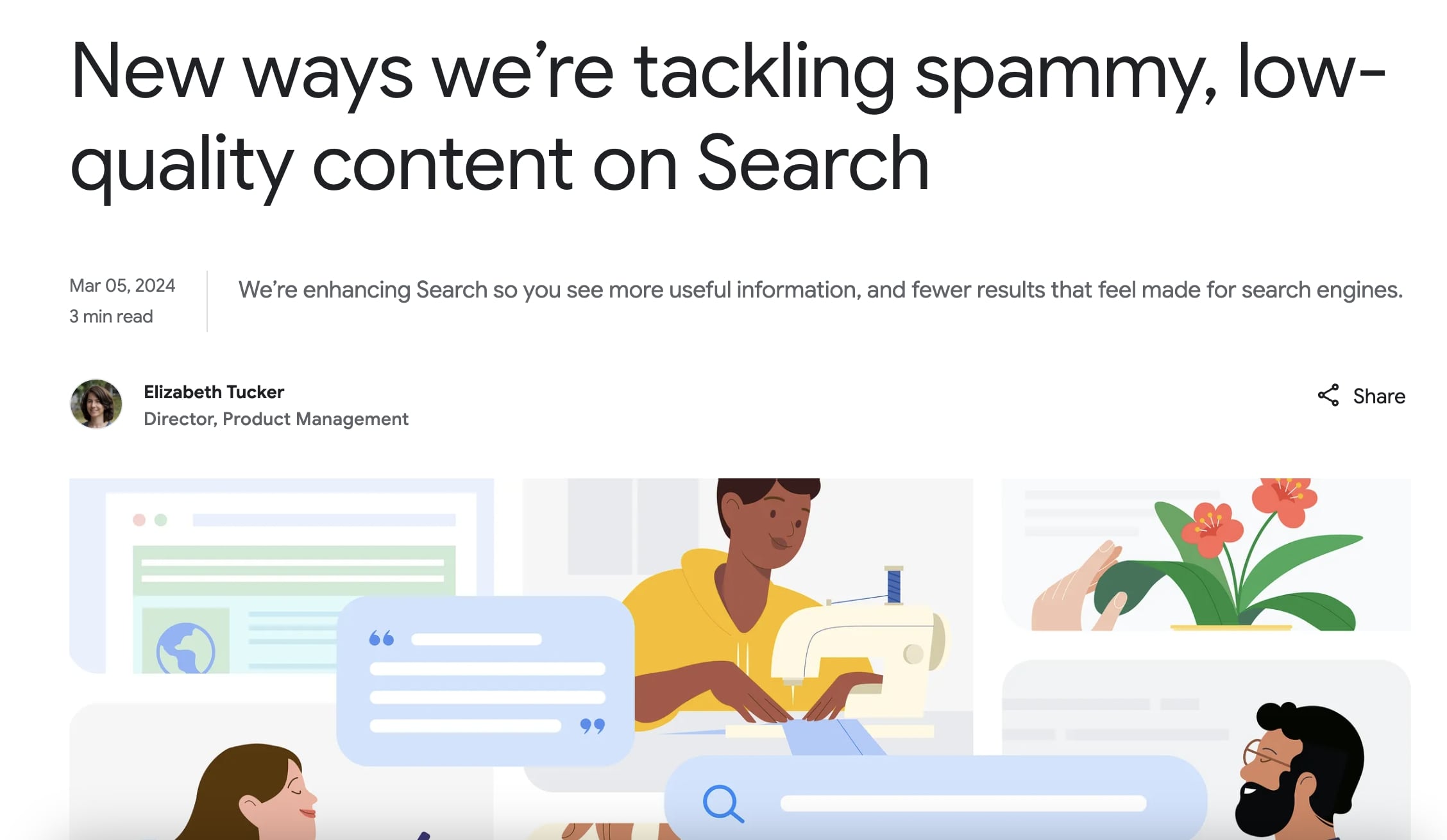
- Expired domain abuse – the misuse of expired domains. This occurs when an expired domain is purchased to gain traffic through its historical reputation, but low-value or irrelevant content is published. Now, this can lead to a loss of rank or removal from search results.
- Scaled content abuse – mass generation of templated or automated content to manipulate search results. Whether created by AI or humans, Google aims to suppress such attempts.
- Site reputation abuse – using a domain’s authority to host third-party content (such as guest posts or PBN), with the aim of artificially boosting rankings.
Additionally, Google emphasizes a shift toward SEO trends 2025, where the value of quality links and content becomes critically important – volume and automation take a backseat.
November 2024: Clarification of “site reputation abuse” Policy
On November 19, 2024, Google clarified the definition of site reputation abuse – it is now clear that no involvement from the site owner, including editorial control, white labeling, or licensing, absolves one from responsibility. Even if the content seems “human” or authorized, it still violates the policy if the goal is to exploit the domain’s reputation for ranking.
This change is particularly important for link building in 2025: now any guest content, even with control, can be considered manipulative if the goal is ranking rather than usefulness.
The Role of ML/AI (SpamBrain) in Combating Link Spam
SpamBrain is Google’s machine learning system actively used to detect paid and manipulative links. It analyzes link patterns, donor sites, and behavioral signals to neutralize PBNs and mass link purchases. The result is that link promotion becomes increasingly selective and contextual.
This is an important trend in link building for 2025-2026: moving away from mass link posting, focusing on quality and relevant sources, and strategies that consider trust and thematic alignment. The simplified mechanics of “posting more links” no longer work.
What this means for link building strategies:
- Guest posts and parasitic SEO are becoming risky. It’s crucial to carefully choose platforms and publication goals, clearly focusing on relevance and value for the reader, rather than ranking.
- Expired domains and PBNs are becoming obsolete. New domains, especially those with questionable histories, are unlikely to provide sustainable effects.
- AI content is permissible if it brings real value. Large-scale content generation without editorial quality will be penalized.
- Reevaluation of metrics: Emphasis on the authority and thematic relevance of donors, purity, trust, rather than the number of links.
“Are links becoming less important?” – How to interpret Google’s statements
In recent years, Google representatives have stated several times that links are no longer in the top 3 ranking factors. For the industry, this sounded like the “death of links,” but in practice, it’s about the redistribution of signal importance. Link building in 2025 remains relevant; the focus is simply shifting from quantity to quality and context.

Links still remain the strongest indicator of trust, but Google increasingly relies on additional factors: understanding entities, the semantic connections between them, and audience behavioral signals. This explains why the link building forecast for 2026 is related to the growing importance of thematic relevance and the authority of donors, rather than the mechanics of “the more links, the better.”
| Year / Update | Key Changes | Risks for Link Building | Opportunities and New Focus Areas |
|---|---|---|---|
| September 2022 – Helpful Content Update | Focus on content usefulness for users rather than SEO optimization | Mass article placements for the sake of links became less effective | Create content with real value, enhance expertise |
| October 2023 – SpamBrain Expansion | Expansion of the ML system for detecting link spam | PBNs and purchased links have become even riskier | Invest in native mentions and organic outreach |
| March 2024 – Core Update + New Spam Policies | Introduction of rules against expired domains, scaled content abuse, site reputation abuse | Mass guest posts and parasitic content are losing ground | Quality collaborations, publications in niche media |
| November 2024 – Clarification on Site Reputation Abuse | Any third-party content aimed at ranking can be considered a violation | Even “legal” guest posts are at risk | Focus on own platforms, partnership projects, and branded content |
| 2025 – Gradual Shift to Entity-Based Ranking | Strengthening the role of entities, context, and domain reputation | Ignoring link semantics reduces effectiveness | Work with relevant clusters, content connections, and mentions |
Quality and Topical Relevance vs. “Mass Purchase”
Today’s link building trends indicate that the era of mass purchasing links is becoming a thing of the past. Google’s algorithms are increasingly filtering out artificial signals, emphasizing the quality of sources. Link building in 2026 requires more than just increasing backlink volume; it demands the creation of a meaningful profile with relevant donor sites, natural link environments, and thematic closeness. This is the foundation for the future of link building, which will evolve in 2026.
For businesses, this means that instead of dozens of cheap links from directories and “link farms,” investing in targeted partnerships, native publications, and PR activities is advisable. Such an approach will ensure sustainable results even if the SEO forecast for 2025–2026 suggests a decline in the influence of traditional link building as a “technical factor.”
What Works Now According to Search Engine Land
Search Engine Land’s analytics confirm key shifts:
- Quality over quantity – A link from a single high-reputation niche resource is often more valuable than dozens of secondary donors.
- Strict thematic relevance – Links should be embedded in context that matches the site’s niche. This is a key trust factor.
- Natural anchor diversification – Overuse of keywords in anchors is perceived as manipulation; organic phrasing wins out.
- Utilization of internal links and partnerships – A comprehensive link building strategy for 2025 combines external and internal links, enhancing semantic connections.
- Working with unlinked mentions – Even without a direct link, brand mentions become a signal for search engines, especially in the context of entity-based ranking.
Together, these practices form the foundation of the link building strategy for 2026: less mechanics, more focus on content, partnerships, and reputation.
Market Data: How Teams Build Links in 2025
According to a BuzzStream study, 2025 sees a significant shift in link building approaches. Only 29% of teams rate their efforts as successful, indicating high competition and the need for a more strategic approach. Meanwhile, 66% of professionals struggle to choose effective tactics, highlighting the importance of adapting to algorithm changes and industry trends.
| Link Building Tactics | Risk Assessment (under Google filters) | Expectations in 2026 |
|---|---|---|
| Guest Posts | High risk (especially with DA < 40) | Decreased effectiveness |
| Paid Links | Very high risk | Recommended to avoid |
| Partner Publications | Low risk with proper implementation | Increased investment |
| Digital PR | Low risk with quality content | Growth in popularity and effectiveness |
| Internal Links | Minimal risk | Continued use |
These data underscore the importance of choosing strategies that align with current search engine requirements and market expectations. Special attention should be paid to content quality and the naturalness of the link profile.
AI/ML and Link Profile Assessment in 2025
With the development of AI and ML, link building in 2025 is undergoing a qualitative shift. Traditional metrics like the number of links no longer reflect the true value of a link profile. Today, search engines increasingly rely on algorithms that can evaluate not just the presence of links, but also their context, relevance, and source trustworthiness. This directly impacts link building strategies for 2025–2026, shaping the future of link building as a more intelligent and adaptive process.

How ML Changes the “Weight” of Links
Machine learning systems, such as Google’s SpamBrain, actively neutralize unnatural links, reducing the returns from bulk purchasing and network schemes. In this context, the link building strategy for 2025 is built around the principles of a “safe” profile:
- Relevance signals. A link should match the theme of the website and the content it refers to. ML algorithms evaluate this factor as one of the key trust signals.
- Source diversification. Evenly distributing links across different types of platforms reduces the risk of filters and makes the profile appear natural.
- Contextual integration. Links should be seamlessly embedded within the text, enriching the content and providing value to the user.
These changes shape the link building forecast 2026: the effectiveness of links will be determined not by their quantity, but by the ability of ML algorithms to “understand” the value of a link in the context of content and user signals.
Link Building in the Era of AI Overviews and LLM
AI Overviews and LLM (Large Language Models) are transforming the very model of content consumption. Today, search bots and generative systems increasingly provide answers directly in the search results, forming so-called “zero-click” SERPs. In this environment, links are no longer just a source of traffic; they become tools for visibility and citation.
- Mentions and citations are becoming critically important. Even if a user doesn’t click the link, the mere mention of a brand or resource in content processed by LLM is considered when forming AI responses.
- KPIs are transforming. Traditional metrics (traffic, rankings) are giving way to new ones: share of mentions in AI summaries, “link-assisted” brand searches, and citations on external resources.
- The future of link building is directly tied to the ability to integrate links and mentions into strategic AI scenarios: proper link distribution, quality content, and thematic relevance will become the main factors of effectiveness.
Thus, link building trends 2025 indicate that the future of the industry is a combination of classic principles of a quality link profile and adaptation to AI/ML, which redefine what an “effective link” means. Link building strategy for SEO 2026 will be built on the synergy of quality content, natural links, and understanding algorithmic signals.
The Rise of Brand Mentions and Unlinked References
In an era where traditional link building faces the constraints of mass link purchasing, the importance of brand mentions and so-called unlinked mentions is growing. These mentions, even without a direct link, build trust with search engines and enhance the site’s authority. This approach reflects future link building trends in 2026, where the significance of the “brand signal” will only increase.
Brand mentions serve as a kind of “fuel” for link opportunities: monitoring them allows for the identification of potential platforms for conversion into full-fledged links. This is especially relevant in the age of AI Overviews and LLM, where search algorithms consider not only actual links but also contextual mentions when forming AI responses and summaries.
Unlinked mentions as “Fuel” for Link Opportunities
According to Search Engine Land, monitoring unlinked mentions remains one of the most effective channels for building a link profile. Key takeaways:
- Identifying Mentions. Any mention of a brand in relevant content can potentially be converted into a link, enhancing the naturalness of the profile.
- Increasing Brand Trust. Even without a link, search engines perceive mentions as a signal of authority and relevance.
- Integration with Traditional Link Building. Working with unlinked mentions strengthens the effectiveness of guest posts, PR, and partner placements, allowing for a combination of traditional and new approaches.
Thus, the link building strategy for SEO 2025 should include systematic monitoring of brand mentions and converting them into links. This is the foundation of the future of link building, where value is determined not by quantity, but by quality, relevance, and contextual integration of links.
Mentions and Generative Search
With the growing role of AI and generative search, link building in 2025 is undergoing significant changes. Today, links are no longer the sole ranking signal: search engines increasingly consider web mentions, even without direct links. According to BuzzStream, experts note that such mentions significantly expand brand visibility in LLM (Large Language Models) and AI summaries.
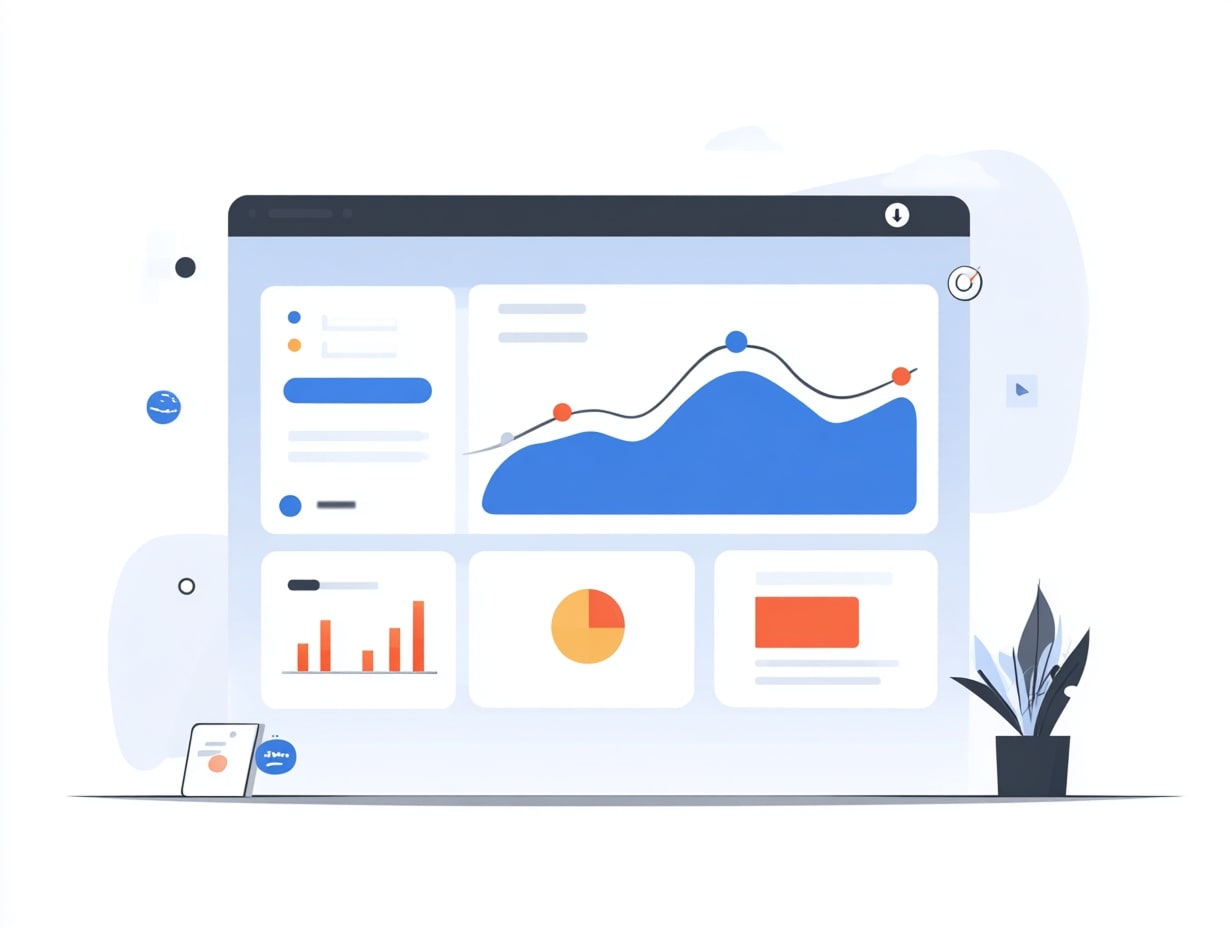
This directly impacts the link building strategies for 2025–2026: now investments in Digital PR, cited research, and quality mentions become not just reputation tools but real SEO factors. This approach shapes the link building forecast for 2025: sites with strong brand presence and systematic work with mentions gain an advantage in AI ranking and search results.
| Source of Mention | Visibility Benefits | Link Conversion Potential |
|---|---|---|
| Media / Online Publications | High authority, trust | Medium–High |
| Directories and Niche Listings | Thematic relevance | Medium |
| Influencers and Bloggers | Social proof | High |
| Q&A Platforms / Forums | Audience engagement | Medium |
| Podcasts / Audio Content | New mention formats | Low–Medium |
Additionally, Digital PR helps create natural, relevant mentions in media, blogs, podcasts, and niche platforms. This enhances search engines’ trust in the website, boosts its authority, and builds a sustainable profile for link building in 2025. In the context of AI Overviews and LLM, such mentions become critically important for appearing in summaries and bot responses, making Digital PR a vital component of link building strategies for 2026.
LinkBuilder.com offers professional Digital PR services, including finding relevant platforms, publishing expert content, and monitoring mentions. This approach allows increasing brand visibility through publications and citations and integrating them into a comprehensive link building strategy aligned with the link building forecast for 2026.
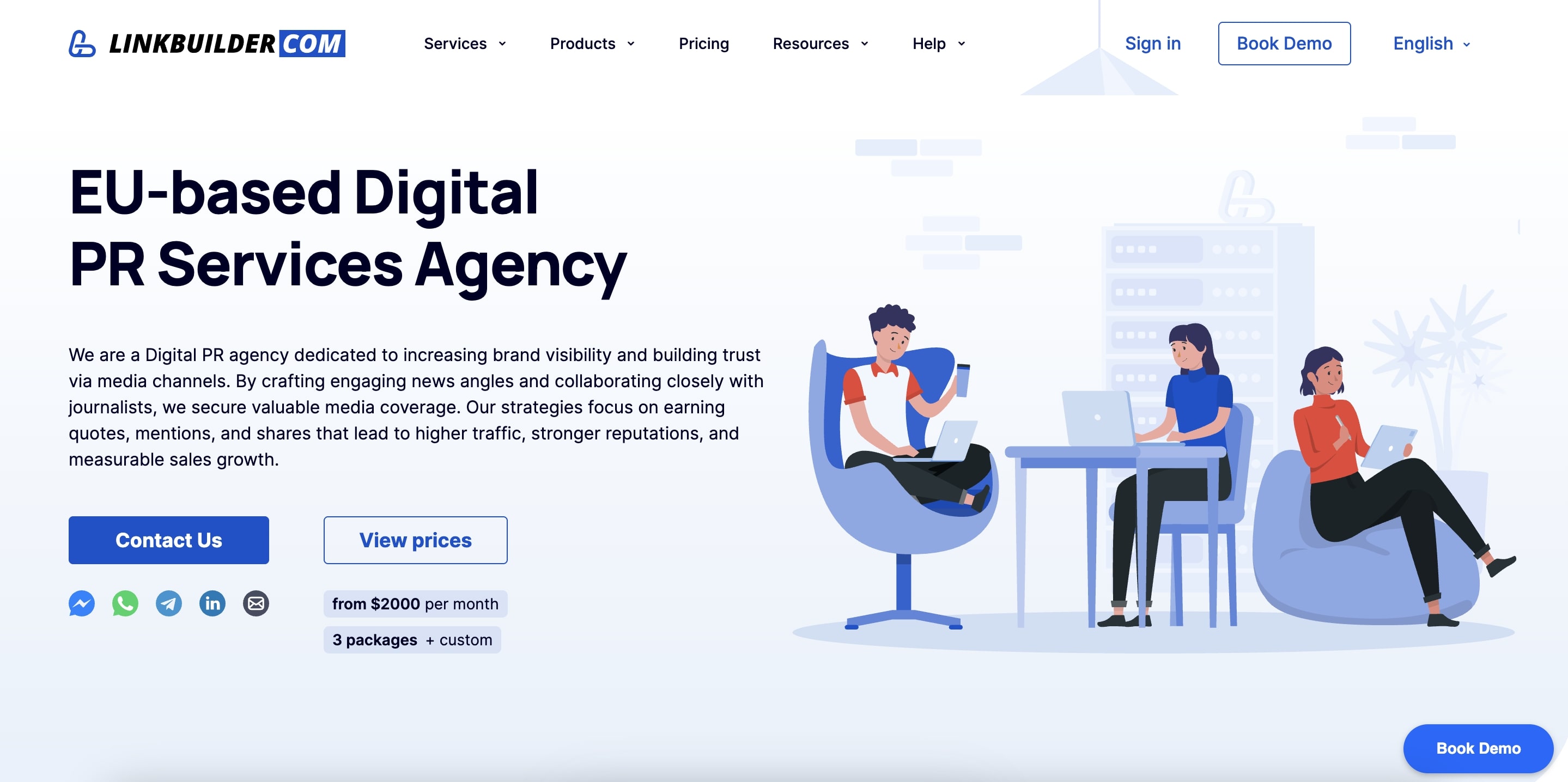
In addition, working with Digital PR opens up additional opportunities for analyzing KPIs: not only direct clicks and links are tracked, but also brand visibility in AI responses, citations, and influence on search results. This allows building a link building strategy for SEO 2025–2026 based on objective data and predicting the effectiveness of promotional investments.
2025 Trends in White-Label and the Demand for Transparency/Security
In addition to strict quality control, the role of analytics and automation in link building has strengthened in 2025. Agencies are actively implementing tools to monitor clients’ link profiles in real-time, enabling the prompt identification of potentially harmful links and the adjustment of strategies. This is particularly important for white-label solutions, where external contractors provide services under the client’s brand – the transparency of processes and the ability to audit become critical factors for trust.
There is also a noticeable trend towards integrating link building with overall SEO strategies. Link building in 2026 will no longer exist in isolation: building links will be closely tied to content marketing, PR, and traffic analytics. This approach not only helps increase the number of backlinks but also ensures long-term site authority growth and a steady rise in organic traffic, aligning with SEO trends 2025 and the demands of the modern market.
What the Market Says in 2025
In 2025, the link building market shows a significant shift towards transparency and strict adherence to Google’s rules. The tightening of search engine policies increases the demand for verifiable processes – clients and agencies now require full reporting on link sources, the quality of platforms, and adherence to safe practices. Within this trend, link building becomes more structured: every link, every brand mention, and every domain check before publication is important.
One of the key tools in the market is “risk-free” agreements and domain due diligence procedures. Companies aim to minimize potential penalties from Google and avoid being placed on sanction lists. This is not just a formality: the link building strategy for SEO 2025 is now built around a safe, measurable, and transparent process, where each publication undergoes a multi-step review, and the reporting results allow the client to see real returns.
Link building trends 2025 also reflect a growing interest in white-label solutions, where agencies use external platforms to scale publications while adhering to strict internal standards of quality and transparency. Thus, the future of link building is not only about the number of links but also their reliability, accountability, and risk management – these elements become decisive when choosing a contractor.
Checklist for Selecting a White-Label Provider
The effectiveness of link building is directly dependent on the quality of the white-label partner. With Google’s tightening requirements and increased focus on process transparency, choosing the right provider becomes crucial for safety and results. Below is a detailed checklist that will help evaluate a potential partner across all critical parameters.
- Origin of Donors
- Traffic sources, historical trends.
- Check how stable the platforms are and how long they have been generating organic traffic.
- Thematic Relevance
- Links should appear on resources that are thematically related to your site.
- This enhances link building effectiveness and reduces the risk of penalties.
- Editorial Criteria
- How strictly content is reviewed before publication.
- Evaluate the presence of internal quality standards and publication controls.
- Indexability and Followability of Links
- Ensure that links are indexed and “follow” when important for SEO.
- Anchoring Policy
- Natural anchor lists.
- The partner should avoid excessive keyword optimization.
- Rejection of Paid “Niche Edits” Without Editorial Value
- Links should be meaningful and provide real value.
- Replacement and Refund Conditions
- Availability of guarantees and clear rules for refunding or correcting links.
- Compliance with Google’s Spam Policies
- The provider should adhere to search engine guidelines and avoid questionable practices.
Who to Contact for White-Label Link Building
If you’re looking for a reliable partner to provide white-label link building services to your clients, contact LinkBuilder.com. We offer a full range of services to create high-quality backlinks that can be branded with your logo and integrated into your strategy without the need for in-house specialists.
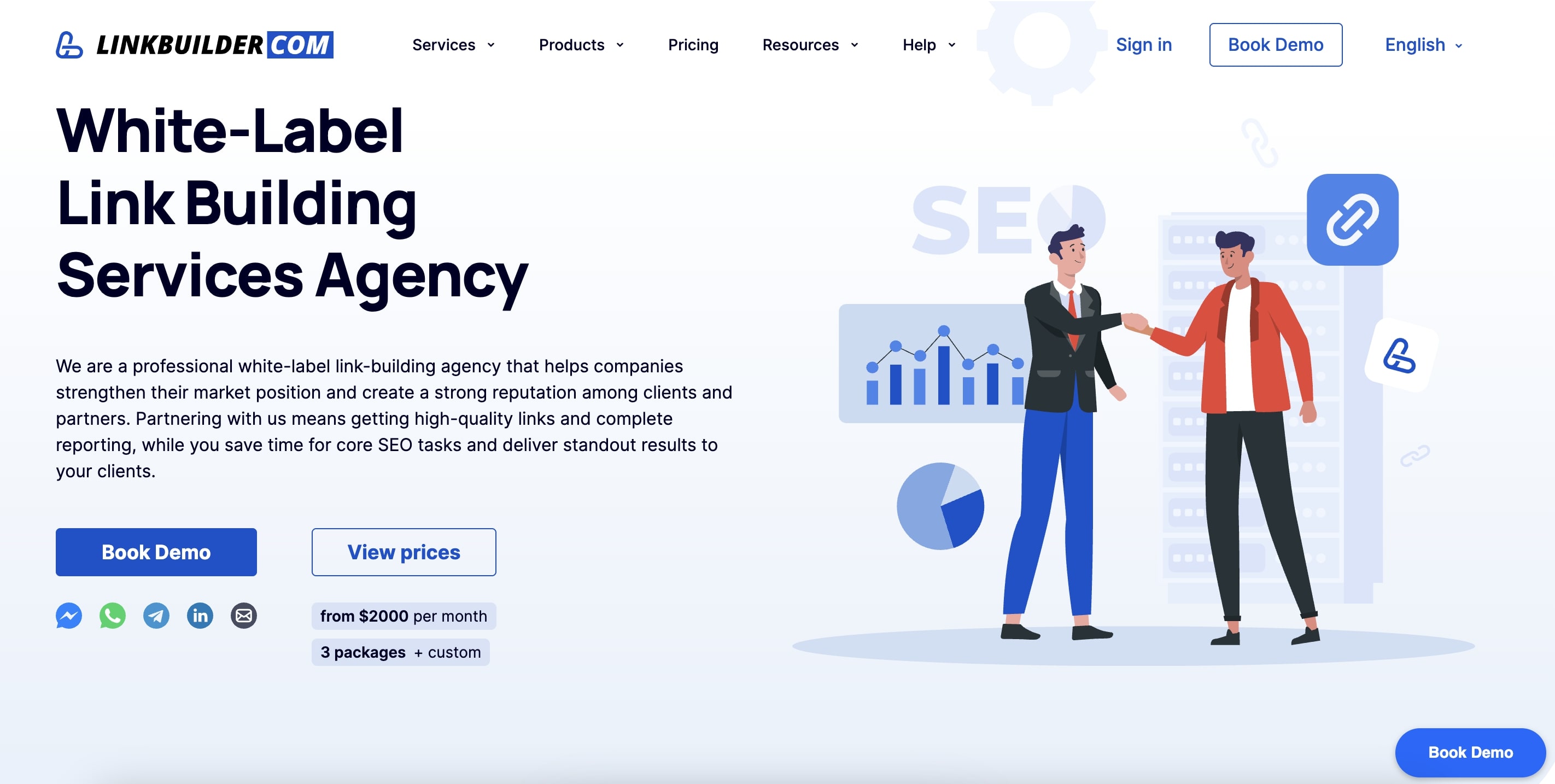
Advantages of Partnering with LinkBuilder.com:
- Full-Service Cycle: From selecting donors and creating content to link placement and reporting.
- Transparency and Reporting: Each stage of the work is accompanied by detailed reports, ensuring full control over the process.
- Cost: Starting at $2000/month for agencies. Branded reports + 15% return from our prices.
- Experience and Professionalism: The LinkBuilder.com team has extensive experience in link building and is ready to offer tailored solutions for your business.

By partnering with LinkBuilder.com, you gain the opportunity to expand your service offerings without the need to build your own team of specialists, allowing you to focus on developing your brand and meeting client needs.
Practice 2025: Strategies That Deliver
In 2025, the effectiveness of link building is determined not by the quantity of links but by their quality and contextual relevance. Google’s algorithms continue to evolve, assessing the depth of user engagement with content and the naturalness of the link profile. Therefore, strategies focused on direct link purchases or mass spam are gradually losing relevance, giving way to comprehensive approaches where expertise and the value of published material play a key role. In this environment, tactics that organically attract audience attention and create natural connections between sites are particularly in demand.
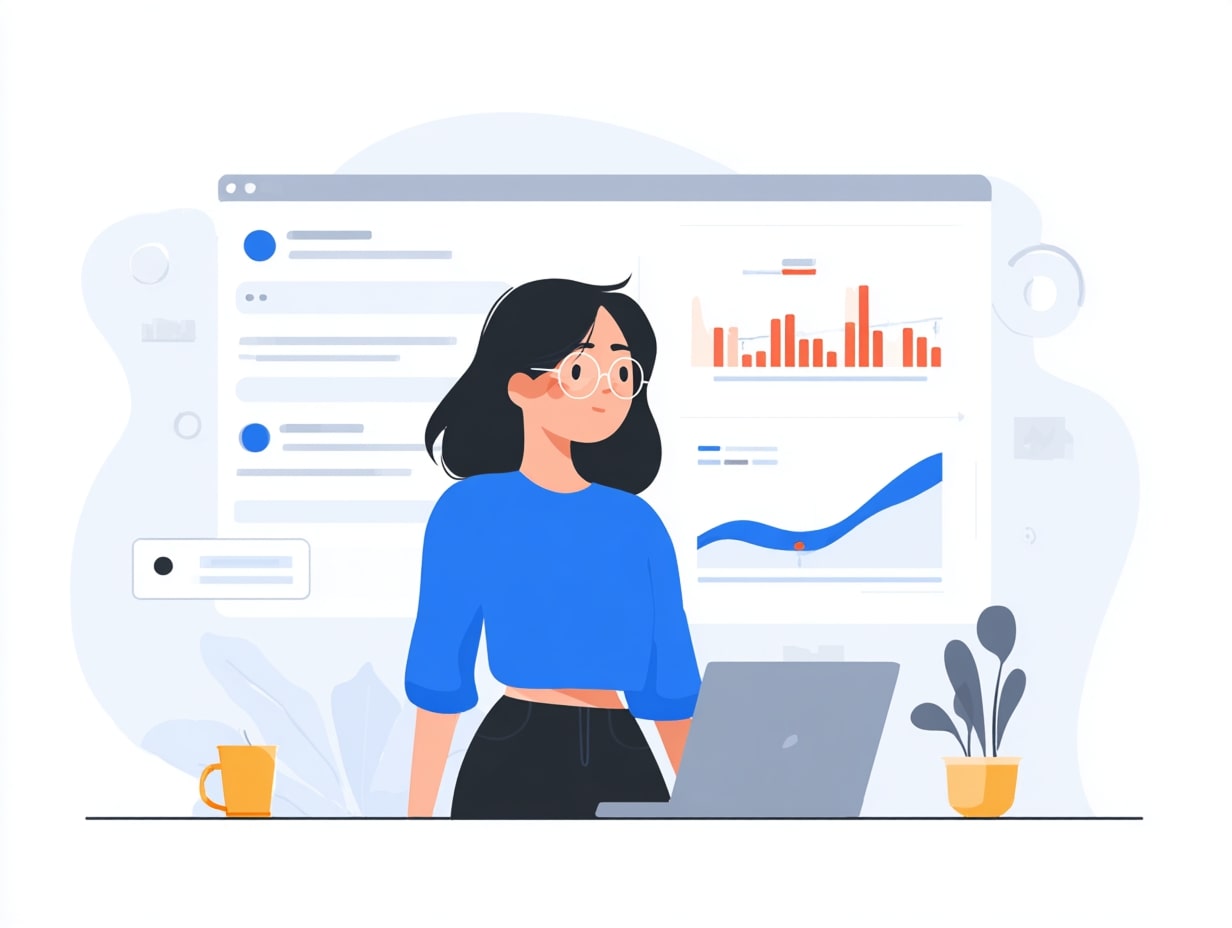
Digital PR 2.0
In 2025, Digital PR reaches a new level – it evolves from merely a tool for brand mentions into a mechanism for creating strategic links through content assets. Research and audience surveys enable the creation of unique data, which become the foundation for infographics and analytical materials, capturing the interest of niche media and bloggers.
Collaborations with experts and partners enhance trust in content and increase the likelihood of organic citations. Commenting on industry trends and publishing about new events not only demonstrate the brand’s expertise but also create natural link opportunities.
In Digital PR 2.0, systematization is crucial: every publication must be strategically aligned, meet the interests of the target audience, and contain high-quality, verifiable content. This approach allows for acquiring links that Google deems authoritative and relevant, boosting the site’s overall SEO potential.
Guest Materials “Aiming for Relevance”
Guest posting remains an effective link building tool; however, in 2025, its value will directly depend on the relevance of the platform and the quality of the content. Promotion through niche-specific resources allows for acquiring targeted links that naturally support SEO and enhance brand authority. A crucial element of the strategy is auditing the editorial policy of platforms: checking the type of content published, the frequency of site updates, and how naturally links appear in the material.
Natural language anchoring is becoming a key trend – using natural phrasing for links instead of exact keywords reduces the risk of penalties and increases search engine trust. Content must be deeply developed and relevant: research, case studies, analytics, and expert commentary create value not only for the audience but also for SEO. This approach ensures organic growth of the link profile and increases the chances of long-term stability in rankings.
Product and Commercial Pages
Shifting focus from blog content to product and commercial pages is one of the main link building trends in 2025. Brands recognize that links to informational articles work well for traffic, but don’t always effectively convert users. A well-thought-out approach includes creating structured landing pages, feature and solution pages, where each link is naturally integrated into the context.
To avoid over-optimization, it’s important to control the page structure, build internal linking wisely, and use contextual product mentions without excessive optimization. This allows search engines to perceive links as natural and useful for the user, rather than as manipulation. As a result, such pages become a magnet for high-quality traffic and organic links, while simultaneously strengthening the commercial aspect of the website.
Local and Industry Directories/Associations
In 2025, local and industry directories remain a crucial tool for strengthening a website’s authority and enhancing search visibility. Google is increasingly evaluating not only direct links but also legitimate “citations” – mentions of a brand, address, contact information, and professional associations. Such signals help algorithms better understand the business context and its relevance to a particular industry or region.
Registering in authoritative local and niche directories boosts search engine trust and creates natural links to the site without the risk of penalties. It is important to choose directories with verified moderation and transparent editorial policies so that each listing provides not only link value but also quality local signals. For companies with a physical presence, this becomes a part of a comprehensive SEO strategy: combining Digital PR, guest posts, and local mentions forms a sustainable link profile, aligned with link building trends 2025.
Budgets, Metrics, and Reporting
Managing budgets and metrics in link building for 2025–2026 requires special attention to planning and forecasting outcomes. The market anticipates an increase in SEO investments; however, limited resources and the high cost of quality links compel companies to develop strategies with a portfolio effect in mind. Detailed reporting and a transparent methodology help convince stakeholders of the investment’s effectiveness, minimizing the risk of budget overspending.
Market Budgets and Expectations
According to a BuzzStream report, the majority of link building professionals (56%) plan to increase their investments in this area over the next 12 months: 19% intend to significantly increase their spending, while 37% plan a slight increase. Meanwhile, 35% expect their investments to remain at the current level, and only a small portion intends to reduce budgets (7% slightly and 2% significantly). These data highlight the overall trend of increasing resources for link building and the need for effective investment management.
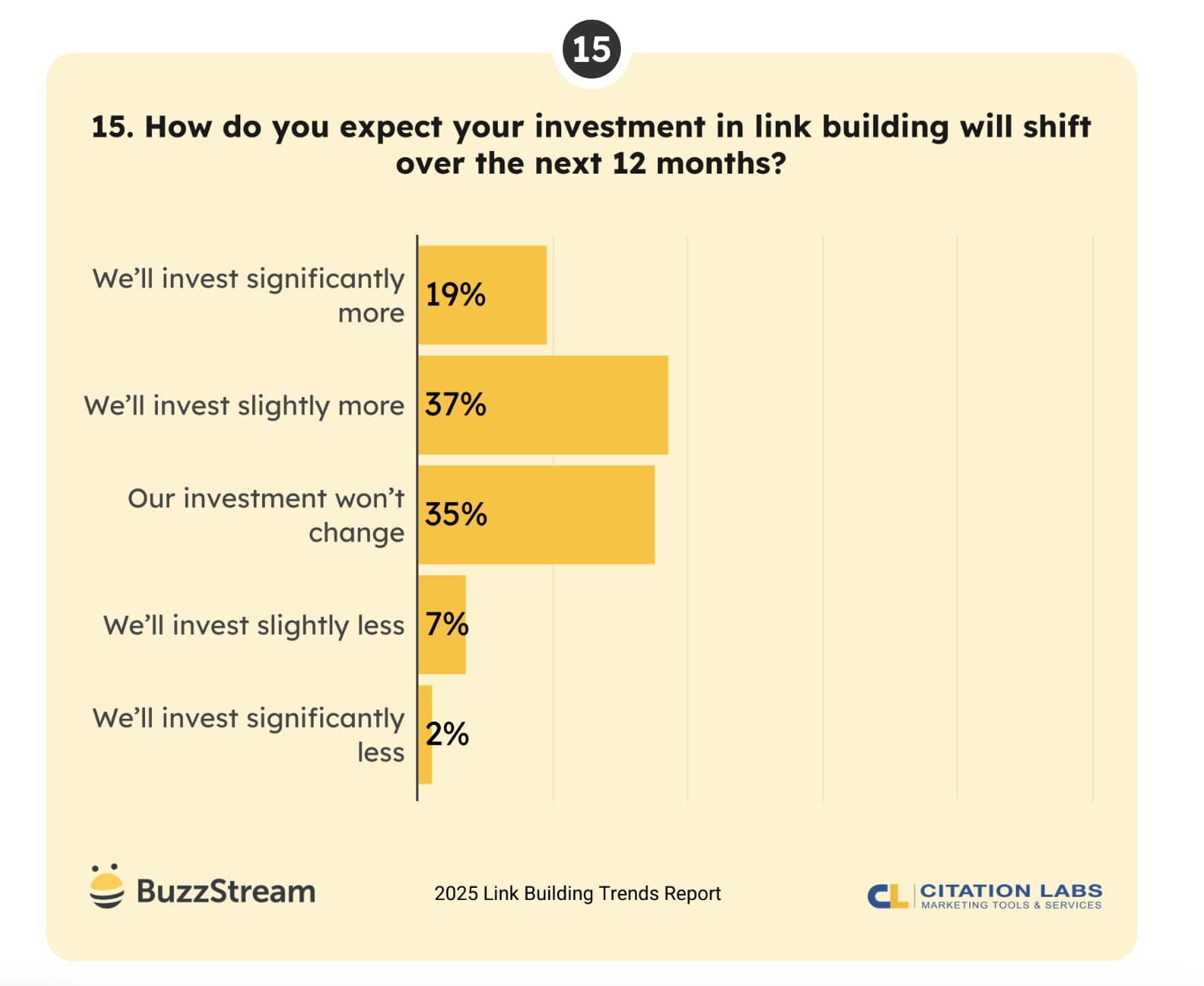
What to Include in Reporting to Protect Your Budget
- Performance Metrics – Tracking indicators such as increased organic traffic, improved search engine rankings, and conversion growth helps demonstrate the direct correlation between investments and results.
- Quality of Links – It’s important to emphasize high-quality, relevant, and authoritative links acquired through Digital PR strategies, rather than focusing on bulk or low-quality links.
- Long-term Results – As the effects of link building may become evident over several months, it’s essential to present data on the long-term impact on SEO rankings and brand visibility.
- Comparative Analysis – Comparing current results with previous periods or competitors helps highlight the effectiveness of the chosen strategy.
- Use of Tools – Utilizing specialized tools such as BuzzStream, Google Search Console, and Ahrefs for data collection and analysis enhances the credibility of the reporting.
By considering these aspects, businesses can adapt to the latest link building techniques and prepare for link building trends 2025 and beyond.
To successfully defend a link building budget, it is essential to present comprehensive and well-substantiated reports that demonstrate the true value and effectiveness of the investments.
Timing of Impact and ROMI
According to a study by Outreach Monks, 89.2% of link building specialists observe positive effects from implementing links within 1–6 months. This confirms that link building significantly impacts SEO positions in the short term. However, it is worth noting that high-quality links remain a scarce and costly resource, requiring specialists to adopt a strategic approach to their acquisition.
For a more accurate calculation of ROMI (Return on Marketing Investment), it is important to consider not only direct traffic but also the long-term impact on domain authority, search engine trust, and branded queries. According to the study, 47.8% of marketers consider link building the most challenging part of SEO, highlighting the importance of a comprehensive approach and careful evaluation of each link’s effectiveness.
These insights underscore the need to stay updated with the latest link building techniques and trends, such as link building strategies for SEO 2025, to ensure continued success in the evolving landscape of link building.
To maximize the return on investment in link building, it is recommended to use a portfolio approach, combining various types of links and sources, and regularly analyzing their impact on SEO metrics.
Risks and Compliance: How to Avoid Filters
In recent years, link building has increasingly shifted towards “clean” strategies, and 2025 will be no exception. Google continues to tighten the screws: algorithms are better at recognizing artificial link profile patterns, and sites are more quickly subjected to manual penalties for manipulation attempts. Therefore, when discussing link building trends and forecasts, it’s important to consider not only what will work but also what could pose significant risks.
Red Flags for 2025
By 2025, several red zones can be identified that are likely to trigger filters:
- Paid “niche edits” without editorial value. Mass insertion of links into old articles, especially when they add no new information, is increasingly flagged by Google as spam.
- Cross-niche insertions. When a link to a crypto exchange suddenly appears in a gardening blog, it’s a typical signal of artificial link building.
- Aggressive exact-match anchors. In 2025, such practices will almost certainly raise suspicions: search engines expect more variability and naturalness.
- Scalable content templates. Automated articles “for link placement” no longer work – the risk of being blocked is growing exponentially.
- Parasite SEO. Placing links on other domains without quality control is a shortcut to filters.
- Exploiting expired domains. Using “drops” for networks remains popular, but their manipulative use will become more noticeable to algorithms in 2025.
In other words, link building trends 2025 are directly related to increased demands for transparency and quality. Methods that once yielded results in the “gray zone” are now becoming sources of risk.
“Safe” Optimization Policy
When discussing how link building will change in the coming years, the main focus is on transparency and documentation of all actions. In 2025–2026, agencies and specialists will increasingly need to demonstrate not only the effectiveness but also the “cleanliness” of their link-building work. This is due to the growing attention of search engines to manipulative patterns and new quality factors.
Key elements of a safe policy:
- Doc-trail for each donor domain. Maintaining documentation that records the origin and logic of site selection reduces risks and helps build trust with clients.
- Indexation validation. Links that are not indexed lose value and can distort the strategy. Monitoring indexation becomes a mandatory step.
- Limiting the share of commercial anchors. A high concentration of keywords in anchors remains one of the main triggers for penalties. Balancing branded, diluted, and navigational formats is one of the sustainable link building trends 2026.
- “No-link guarantee” replacement procedures. Many agencies are moving to models where the replacement of “dropped” links or non-indexed publications is included as a standard. This meets clients’ demands for predictability and reduces risks.
- Monitoring drops. Working with expired domains will not disappear but will require more thorough checks: domain history, link profile cleanliness, and thematic relevance.
Safe optimization policies are gradually becoming the industry standard. Looking ahead, the SEO forecast for 2026 suggests that Google will prioritize strategies where user value is above any manipulations. This means that future link building trends and predictions will increasingly align with classic PR and content marketing principles.
LinkBuilder.com Forecasts for 2026: What’s Strengthening, What’s Fading
When discussing how link building will change in 2026, it’s important to consider not only the technical filters of search engines but also which signals will be most valued. Previously, the priority was the “volume” of the link profile, but today more attention is given to the quality of sources and their real significance in the niche.

Strengthening
- Topical Depth and Source Authority
Link building trends 2026 clearly indicate that platforms with precise niche expertise and a confirmed audience will prevail. If a website publishes expert materials in a specific industry and its authors are reputed within the professional community, such links will carry much more weight than placements on “universal” media without thematic focus.
Google and other search engines continue to develop the concept of EEAT (Experience, Expertise, Authoritativeness, Trustworthiness). As a result, link weight is now directly related to how much a site truly serves as a center of trust in its field. For brands, this means that in link building strategies for 2026, priority will be given to industry publications, expert blogs, associations, and specialized media.
- Data-Driven Digital PR
The second direction that will strengthen in 2026 is the work through digital PR activities based on data. Research, statistical reviews, unique tools, and calculators become not only a source of links but also a way to appear in AI summaries and aggregated search engine answers.
A new value model is forming: not just “getting a link,” but creating a news hook that will be cited across various channels. This approach brings “compound value” – a combination of links, mentions, and growth in branded search. Within the SEO trends 2026, this is no longer an auxiliary tool but a full-fledged driver of organic growth.
- Unlinked Mentions as Currency
In 2026, we will see that “unlinked mentions” start to occupy a more significant place in strategies. Search engine algorithms are already able to consider brand mentions as a trust signal, even if they are not accompanied by a clickable link. Therefore, how link building will change in 2026 is not just about working with hyperlinks but also building the brand’s presence in the information field.
For companies, this means a shift in focus: KPIs will be measured not only by the number of links but also by the number of relevant mentions in media, social networks, and expert materials. The next step is the ability to convert such mentions into full-fledged links, but without being intrusive or manipulative. This becomes an important part of link building trends and forecasts for 2026.
- Off-Page Entity Signals
Links no longer work in isolation. Search engines increasingly analyze “above-the-link” factors: NAP (Name, Address, Phone) consistency in directories and business profiles, social media consistency, the presence of authors with expert biographies, and company citations across various sources.
The SEO forecast 2026 shows that link building will be woven into a broader ecosystem of off-page signals. This means that successful strategies will be built not only on links but also on the comprehensive reputation of the brand as an entity.
- Transparent White-Label Models
The market is increasingly moving away from “gray” and opaque schemes. In 2026, the trend towards transparent partnerships will strengthen: clients will want to see exactly how links are built, which donors are chosen, and have access to process audits. Providers who can substantiate their work with documentation, logs, and due diligence on donors will win in the competitive landscape.
How link building will change in 2026 is not just a matter of technology but also trust. Clients will choose contractors whose processes are transparent and whose strategies meet high-quality standards.
Becoming Obsolete
When considering link building trends and forecasts for the coming years, it’s clear that some old practices will cease to be beneficial and gradually fade away. Algorithms are increasingly adept at distinguishing genuine content and natural signals from scalable manipulations, and businesses need to see a direct connection between link building strategies and real results.
- Mass Purchases of “Niche Edits” and Inauthentic Publications
By 2025–2026, the “scale for the sake of scale” approach will have completely lost its effectiveness. Simple link insertions into old articles without editorial value no longer provide significant growth. Moreover, such practices increasingly lead to filters. Therefore, when discussing how link building will change in 2025 and beyond, it’s safe to say that mass purchases of low-quality placements are becoming a thing of the past.
- Cross-Niche Placements and Universal Directories
The idea that “the higher the DR, the better” no longer works. Cross-niche links that have no logical relation to the site’s theme will be perceived as spam. The same goes for “universal” directories without a live audience. Within the link building trends 2026, only relevant and authoritative sources will hold value.
- Aggressive Anchor Templates and “Network” Links
The technique of building a link profile with uniform commercial anchors or PBN networks without real user benefit is no longer effective. Search engines have learned to identify such patterns and downgrade sites that use them. In the future, the priority will be on natural anchoring formats and links with content that genuinely addresses audience needs.
- Reporting “Detached from Business”
Reporting formats where the main KPIs were the number of links or DR growth are gradually taking a back seat. Clients expect a different connection: how links impact visibility, organic traffic, leads, and sales. Therefore, by 2026, metrics will increasingly be based on business results rather than abstract numbers.
12-Month Action Plan
To ensure sustainable results in link building in 2026, it’s useful to plan your work for the year in advance, distributing priorities and metrics by quarters. Below is a framework that can be used as the basis for the strategy:
- Quotas for linkable assets by quarter. Planning the number of valuable content units (articles, studies, tools) helps maintain consistent link building activity and avoid sudden spikes in the link profile, which algorithms might perceive as anomalies.
- Mandatory Digital PR campaigns. Every major promotion should be accompanied by PR activities: publications with data, interviews, research, case studies. This increases the chances of being cited and naturally acquiring links and mentions.
- Monitoring the share of product pages in the link strategy. It’s important to distribute links between informational and commercial pages to avoid imbalance and excessive “commercial” anchor pressure, which reduces the risk of filters.
- SLA for converting mentions. Set metrics for what percentage of brand mentions should be converted into links. This helps systematize work with “unlinked mentions” and turn them into tangible results.
- Implementation of AI visibility metrics (appearance in AI overviews). Using AI-powered tools allows tracking which mentions and links are indexed and appear in aggregated AI summaries. This is a new layer of quality control that ensures the relevance of the link building strategy and its predictable effect.
This framework allows for the development of a systematic strategy for the entire year, focusing on content quality, donor relevance, and transparent reporting, which fully aligns with link building trends 2026.
| Quarter | Activities | KPI / Metrics |
|---|---|---|
| Q1 | - Preparation of linkable assets: articles, research, tools - Launch of initial Digital PR campaigns - Setup of AI visibility metrics | - Number of prepared linkable assets - Initial mentions and links - Tracking appearances in AI overviews |
| Q2 | - Continued content publication - Control of product page share in link strategy - SLA for converting mentions | - Share of links to product pages < 30–40% - % of mentions converted into links - Growth in key URL visibility |
| Q3 | - Second phase of Digital PR campaigns - Engagement with industry experts and authoritative donors - Monitoring of link indexing | - Number of links from highly relevant donors - Percentage of indexed links - Feedback from experts and donors |
| Q4 | - Analysis of yearly performance and strategy adjustment - Final cycle of publications and PR activities - Reporting for CEO/CFO | - Final growth in target URL visibility - Contribution to pipeline/revenue - ROI of link building campaigns |
Tools
In 2026, the toolkit for link building becomes as important as the strategy itself. Without the right stack, it’s impossible to effectively track results, discover new opportunities, and mitigate risks. Moreover, tools begin to dictate how quickly a team can adapt to new realities. In this sense, link building trends in 2026 are directly linked to the development of analytics and automation.
Monitoring, Opportunity Discovery, and Quality Control
The minimum tool stack that becomes standard:
- Crawler. To regularly scan donor sites, check their viability, and identify technical issues.
- Index Check. An automated check of which links are truly indexed and functional. This saves time and avoids “dead” placements.
- Mention Alerting. Monitoring services allow for quick tracking of where the brand is mentioned without a link, turning these findings into full-fledged link building opportunities.
- Link Graph Analysis. Visualizing connections between domains helps identify clusters, find intersections, and avoid ending up in artificial networks.
- AI Metrics Showcase. New tools increasingly use AI algorithms to assess the “quality” of a link: from the likelihood of indexing to the predicted traffic benefits.
Such a combination is no longer an “option” but a basic set necessary to manage large-scale projects and maintain quality standards.
Reporting “for CEO/CFO”
If previously link reports were centered around the number of publications and the growth of DR/UR, in 2026 such metrics will no longer be convincing for top management. Executives are interested not in technical indicators but in business outcomes: how link building impacts revenue, sales, and marketing profitability.
Key elements of “for CEO/CFO” reporting:
- Growth in target URL visibility. The positions and traffic of pages that lead to leads and sales become the main KPI.
- Contribution to pipeline and revenue. Modern reporting models link not only SEO metrics but also CRM data: how many deals and what revenue volume came through organic channels.
- Campaign profitability. The focus is on customer acquisition cost and return on investment. Agencies and in-house teams are learning to demonstrate that every unit of budget spent on link building results in measurable outcomes.
This transformation makes reporting part of the business language: SEO teams stop communicating with management through “metrics for metrics’ sake” and instead demonstrate how link building strategies impact the company’s P&L.
Conclusion
Links remain a crucial factor in search engine optimization, but the approach to building them is evolving. The focus is on thematic and audience relevance, real editorial value, and resilience to algorithmic filters. Mass purchases and mechanical schemes are gradually losing their weight, giving way to strategies where trust and benefit for the end user become the priority.
In 2026, teams that can combine Digital PR, mention management, thoughtful off-page support, and strict compliance will come out on top. This is no longer about “scaling link purchases,” but a full-fledged ecosystem where every link, mention, and publication is underpinned by meaning and business results.
At LinkBuilder.com, we see this transformation from the inside and do everything to ensure our clients keep up with the trends. We provide agency services: develop turnkey link building strategies, select relevant donors, accompany projects, and ensure transparent reporting for clients.
By adopting a comprehensive approach – combining Digital PR, mention management, and strict compliance – we help brands not only expand their link profile but also build a sustainable search presence that withstands any algorithm changes. In 2026, this approach will yield the maximum effect.








